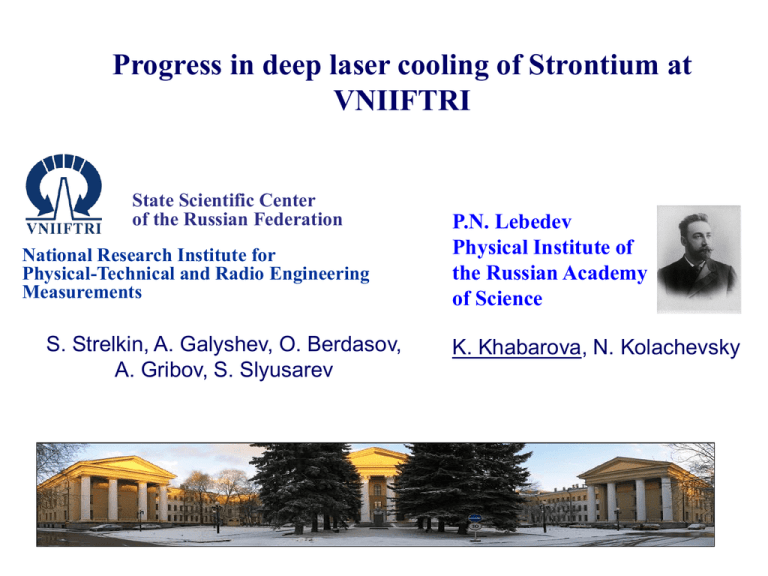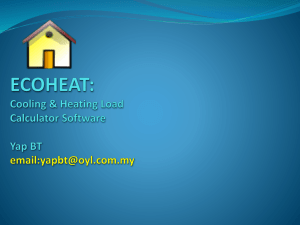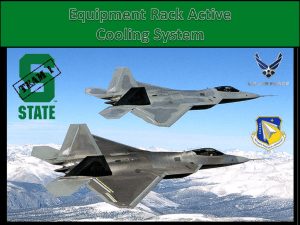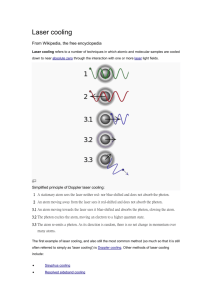Second stage cooling
advertisement

Progress in deep laser cooling of Strontium at VNIIFTRI State Scientific Center of the Russian Federation National Research Institute for Physical-Technical and Radio Engineering Measurements S. Strelkin, A. Galyshev, O. Berdasov, A. Gribov, S. Slyusarev P.N. Lebedev Physical Institute of the Russian Academy of Science K. Khabarova, N. Kolachevsky GLONASS Accuracy m 50 50.0 Anticipated (in 2002) Obtained Anticipated (in 2008) 8 years ago GLONASS allowed one to choose the appropriate street from the list… 45 40 35 35.0 30.0 30 25 20.0 20 3 years ago one knew exactly what the street it was. 16.5 15 12.4 12.8 10.0 8.2 7.0 10 5 8.0 5.5 6.5 5.0 2.8 2.5 0 2006 2007 2008 2009 2010 2011 GLONASS accuracy has significantly improved over last five years Frequency standard’s evolution 1D optical lattice and magic wave lengths M. Takamoto et al., PRL 102, 063002 (2009) Sr-87 optical lattice clock instability “An optical lattice clock with accuracy and stability at the 10 -18 level”, B.J.Bloom etc., Nature, vol 506, 6 Feb. 2014 Sr-87 optical lattice clock in Russia 2010 – Sr lattice clock project within GLONASS program has been started at VNIIFTRI 2011 – collaboration with P.N. Lebedev Physical Institute Sr electronic level diagram Sr isotopes: 88 (81%), 87 (7%), 86 (10%), 84 (2%) Clock transition: 1S 3P 0 0 Natural linewidth = 1 mHz (allowed by hyperfine coupling of 3P0 to 3P1 and 1P ) @ 698 nm 1 Weak sensitivity to the magnetic field (J = 0 →J = 0 transition) 3D scatch of the vacuum system Sr source Zeeman slower Trap Vertical set method of the system Optical scheme oven MOT beams camera Zeeman slower PMT Silver mirror detection beam Zeeman slower beam First stage cooling ~106 Without repumpers ~4x107 With repumpers количество atoms number атомов, [10 8] Repumping effect on trapped atoms number с лазерами перекачки 0.4 2=360 ms мс 0.2 0.0 -2.0 1=24 ms без лазеров перекачки -1.5 -1.0 -0.5 0.0 time, [s] время tс, [] x10 more atoms with repumpers Temperature and number of atoms in the 1st MOT 1 cm Number of atoms in the “blue” MOT N~4*107 Т ~ 3 мК (depends on the intensity) Second stage cooling Narrower transition 1S0 3P1 is well-suited to Doppler cooling (@689 nm, natural linewidth 7,5 kHz, Doppler limit 200 nK) Narrow line requires narrow laser spectrum and high frequency stability Narrowing of the red MOT cooling laser Toptica DL pro laser system @689 nm ULE systems manufacturing and transportation The distance covered during transportation 60 km Laser stabilization fast LD G slow SERVO modulation 20 MHz AOM AOM PD EOM wavemeter PD l/4 Beatnotes ULE-1 Linear drift ~300 mHz/s SERVO PD ECDL @689 Toptica DL-100 (DL-1) beatnote DL-1/DL-2 ECDL @689 Toptica DL-pro (DL-2) Frequency comb H-maser Allan deviation SERVO äåâèàöèÿ Àëëàí à (í î ðì èðî âàí í àÿ) ULE-2 êðèâàÿ 1 PD beatnote -13 -13 DL-1/frequency comb 10 10 êðèâàÿ 2 linear drift subtracted -14 -14 10 10 11 10 10 100 100 âðåì ÿ óñðåäí åítime èÿ [c] [s] averaging 1000 1000 ULE-1 and ULE-2 Critical Temperatures 0 beatnote frequency DL-1/DL-2, MHZ temperture ULE-2, C 14 12 10 16 18 20 22 28 26 24 100 ULE-1 spacer: ATF films Finesse 60 000 80 60 40 ULE-2 Тс 0 = 27 С ULE-2 spacer: Lebedev Physics Institute 20 0 ULE-1 0 8 Тс = 12 С 10 12 14 Finesse 45 000 16 0 temperature ULE-1, C Beatnote spectral linewidth power spectral density [a.u.] 0.16 0.14 0.12 0.10 FWHM=110 Hz 0.08 0.06 0.04 0.02 0.00 -3000 -2000 -1000 0 time [s] 1000 2000 3000 Second stage cooling features Doppler width of 1S0-3P1 transition @3 mK ~ 2 MHz Stabilized laser spectrum Doppler line profile f f0 frequency, [arb.u.] Broadband second stage cooling FM of cooling radiation allows to deal with different velocity groups within Doppler profile лазера спектр spectrum laser доплеровский линии контур line profile Doppler f f0 ед.] [отн. частота, [arb.u.] frequency f (t ) f 0 f cos[2 f mt ] , Broadband second stage cooling 1 mm ~106 Broadband second stage cooling Retrapping efficiency: 8-10% Temperature in the end of broadband cooling: T~35 mK Retrapping efficiency High intensity in the first stage cooling leads to low retrapping efficiency коэффициент перезахвата 0.09 BUT 0.08 0.07 0.06 0.05 0.04 0.03 0.05 0.10 0.15 0.20 I/Isat 0.25 0.30 Number of atoms in secondary MOT Retrapping efficiency The number of atoms in the first MOT depends on the cooling light intensity Single mode second stage Stabilized laser spectrum Doppler line profile after broadband cooling Atomic cloud in the end of the second stage cooling f=100 g f f0 T=2 mK frequency, [arb.u.] N=105 Clock laser systems Clock laser systems 0.10 0.08 signal, сигнал,V[В] 0.06 0.04 Mode TEM00 time response 21,7 ms 0.02 0.00 -0.02 -0.04 0 50 100 150 200 time, ms Target instability 1*10-15 Finesse: 260 000 Achievable laser linewidth: ~1 Hz Conclusions • First stage cooling of 88Sr and 87Sr • Two ULE stabilized lasers for second stage cooling are assembled and characterized • Second stage cooling of 88Sr • Two ULE stabilized laser systems for clock transition spectroscopy are assembled Outlook • Loading cooled atoms in the optical lattice at 813 nm and at 390 nm • OPTICAL LATTICE CLOCK Working group at VNIIFTRI Спасибо за внимание!








